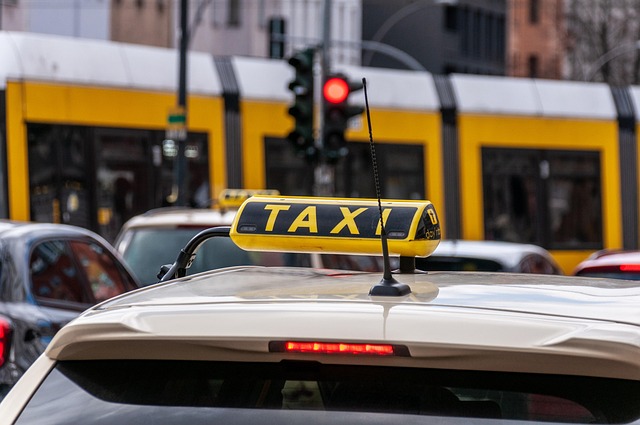Registering a car in California involves understanding specific requirements and gathering essential documents. First, familiarize yourself with the state’s rules, including any fees and necessary steps for VIN (Vehicle Identification Number) verification. Next, collect important paperwork like your vehicle’s title, proof of insurance, and identification. Perform a VIN check to ensure the vehicle’s history is clear. You can complete the registration online or at a DMV office. After approval, pay the fees and obtain your new license plate. Always ensure proper vin verification for a smooth process.
- Understand California Car Registration Requirements
- Gather Necessary Documents for VIN Verification
- Perform Vehicle Identification Number (VIN) Check
- Complete Online Registration or Visit DMV Office
- Pay Registration Fees and Obtain License Plate
Understand California Car Registration Requirements

Before registering your car in California, it’s crucial to understand the state’s specific requirements. The process involves verifying the vehicle’s identity through a critical step known as VIN (Vehicle Identification Number) verification. This ensures that the car is genuine and has not been reported stolen. You’ll need to provide accurate information about the vehicle, including its make, model, year, and current mileage.
A mobile vin verifier or mobile vin inspection service can simplify this process by providing on-site VIN checking. These services use advanced technology to cross-reference your car’s VIN with state records, ensuring all details match up. By adhering to these requirements and potentially utilizing a mobile vin inspection, you’ll be well on your way to successfully registering your vehicle in California.
Gather Necessary Documents for VIN Verification

Before you begin the registration process, ensure you have all the essential documents for VIN (Vehicle Identification Number) verification. This step is crucial as it establishes the vehicle’s history and authenticity. Gather the following: your valid driver’s license or state ID, proof of insurance, and the vehicle’s title or registration. Additionally, you’ll need a mobile vin verifier to obtain the precise VIN details of your car, which can be done quickly and conveniently at your current location. This is especially handy for those in remote areas who may face challenges with traditional vin inspection services.
For a seamless process, make sure all documents are up-to-date and accurate. The mobile vin verification process involves scanning the VIN and inputting it into a database to cross-check against various records, including recall notices, odometer rollbacks, and theft reports. This ensures that your vehicle is safe and ready for California’s registration requirements.
Perform Vehicle Identification Number (VIN) Check

Before proceeding with registration, it’s crucial to perform a Vehicle Identification Number (VIN) check. This verification process ensures that your car’s VIN is accurate and matches the vehicle’s actual make, model, year, and other details. In California, you can conduct this vin inspection through various methods, including using a mobile vin verifier or scheduling an appointment for a traditional vin inspection at a designated location.
A mobile vin inspection offers convenience by allowing you to check your car’s VIN right from your location, saving time and effort. Alternatively, a traditional vin verification involves visiting an official inspection station where specialized equipment confirms the authenticity of your vehicle’s information. Whichever method you choose, ensure that the details align with your car’s documentation for a seamless registration process.
Complete Online Registration or Visit DMV Office

You have two options for registering your car in California: complete the process online or visit a DMV office in person. Both methods require preparing essential documents and information, such as proof of ownership, valid identification, and payment for registration fees.
If you opt for online registration, you’ll first need to conduct a VIN verification using a reliable service, ensuring your vehicle’s identity is confirmed. This step involves entering your car’s unique 17-character Vehicle Identification Number (VIN) into a database to check its history and ensure it meets California’s requirements. Alternatively, you can request a mobile vin inspection or use a mobile vin verifier app for convenience and to save time.
Pay Registration Fees and Obtain License Plate

After completing the registration application, it’s time to pay the registration fees. These fees vary based on the type and age of your vehicle. You can typically pay online, by phone, or in person at a California Department of Motor Vehicles (DMV) office. Once your payment is processed, you’ll receive a temporary registration permit.
Before driving your newly registered vehicle, you must obtain license plates. This involves submitting the temporary permit, proof of insurance, and passing a vin verification inspection (also known as a mobile vin inspection or vin inspection). Many DMV offices offer this service, or you can opt for a mobile vin verification to save time and effort. Ensure your license plates are displayed prominently on your vehicle to avoid any legal issues while driving.
Registering a car in California involves understanding key requirements, gathering essential documents for VIN verification, performing a vehicle identification number (VIN) check, completing online registration or visiting a DMV office, paying registration fees, and obtaining license plates. By adhering to these steps and ensuring proper VIN verification, you can navigate the process smoothly and keep your vehicle legally registered in the Golden State.
